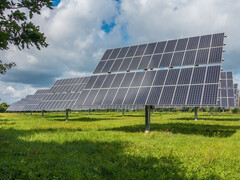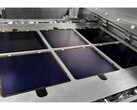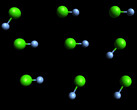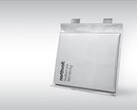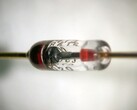Recently, the efficiency of 33.9 percent of a solar cell from the manufacturer LONGi made the headlines, although it was only a tiny sample.
It was not just the high energy yield that was remarkable, but rather the composition of the cells, which gives hope for the future. A layer of perovskite is applied to a classic solar cell, mainly made of silicon.
Cells made from this material, calcium titanate to be precise, should be able to achieve up to 50 percent efficiency, at least in a laboratory environment. Unfortunately, they are not very durable, certainly not for 25 years, which a classic silicon-based solar cell can achieve and then still achieve 80 percent of its original efficiency.
Unfortunately, this efficiency is not as high as would be desirable. The maximum energy yield is just under 20 percent. And this is where the tandem solar cell comes into play. It is still conjecture, but at best 45 percent efficiency and a life span of 30 years at least sounds promising.
Practically feasible
Oxford PV has demonstrated that this can work on an industrial scale at its factory in Brandenburg an der Havel, Germany. Such tandem solar cells are already being manufactured here and achieve an efficiency of 28.6 percent.
On a larger scale, they are calculated at 24 percent. Oxford PV also states that the factory there alone can produce 50 megawatts of power per year at full capacity. A typical house roof has a capacity of around 10 kilowatts, i.e. 0.01 megawatts.
Much more, much cheaper
This development has come just in time, as a look at the absolute figures shows. In 2022, 1.2 terawatts of solar power were installed - across the entire planet. Even if this energy were to be used optimally, this amount would not even be enough to cover the entire energy requirements of an industrialized country like Germany.
The aim is therefore to have 100 terawatts available worldwide by 2060 if possible. That would be equivalent to 25 times the amount of electricity that the USA produces every year.
The prices per kilowatt hour are already more than competitive. 6 cents over the entire life cycle of a photovoltaic system. It would be half that for tandem solar cells with perovskite and silicon.
Compared to fossil fuels or even nuclear power, where even the energy companies talk of around 9 cents per kilowatt, solar energy is remarkably cheap.
The problem is that the investment has to be made before the first kilowatt hour is produced. With gas or oil, payments have to be made gradually. With nuclear energy, the next generation has to worry about the costs of disposal.
Cheap, durable and particularly efficient solar modules are therefore very welcome.




